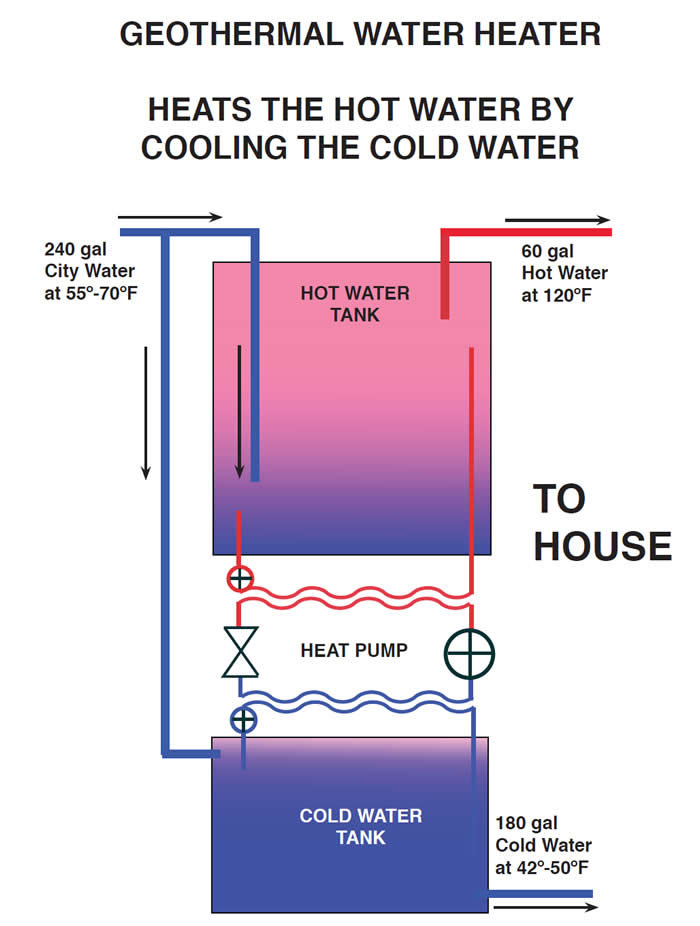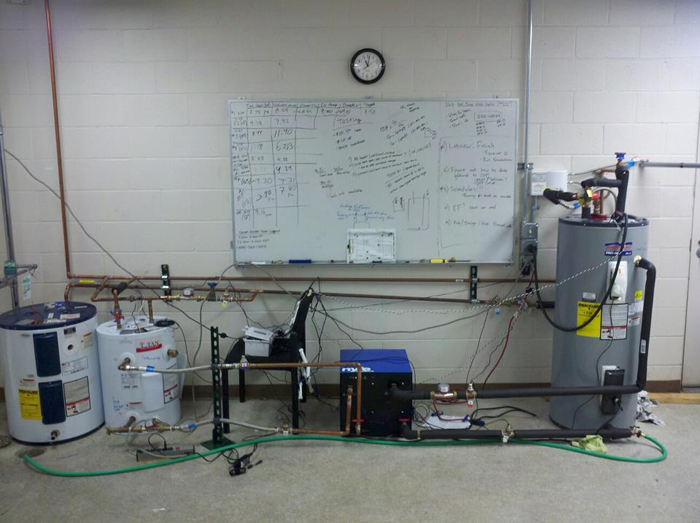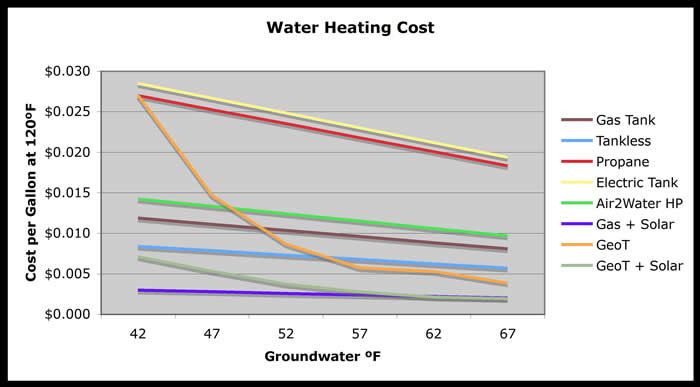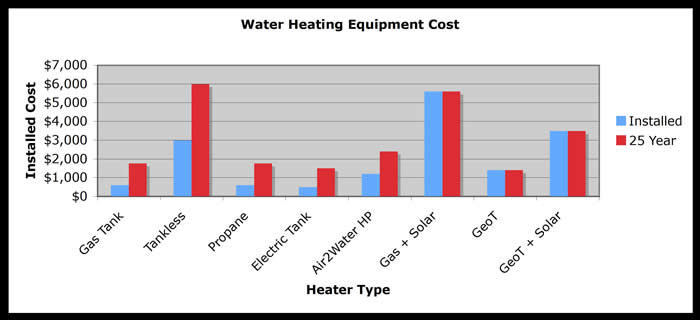"EarthHeat", the next generation water heating system - less expensive and more efficient than gas, electrical or solar powered water heating systems currently on the market. Here is how it works.
Geo-T Geothermal Water Heater
Hal Slater | Hal Slater
This geothermal water heater design consists of two water tanks connected together with a water-to-water heat pump to extract heat from (or cool) the water in one tank to heat the water in the other. The hot water tank is intended to supply heated water for common domestic uses while the cold water tank is simply installed in-line with the home’s cold water plumbing circuit. It is a geothermal water heater (GeoT) because the available heat from the cold water supply comes from the ground in which the supply lines are buried.

This invention takes advantage of the fact that, within the typical ranges of temperature and volume that water is used, the available energy in the cold water approximates the energy required to heat the hot water. The heat held by the ground water can be extracted from the incoming cold water to heat the hot water using one-fourth the electrical energy required to heat the water directly.
A grant was awarded by the CEC EISG (California Energy Commission, Energy Innovation Small Grant ) program for approximately $80,000. The purpose of the funding is to perform Stage One testing of the geothermal water heater to establish the following:
- Chart the Coefficient of Performance (COP) and the Energy Factor (EF) of the system as a function of groundwater temperature using the DOE Energy Star water heater test protocol.
- Calibrate and refine a simulation model (currently available at http://www.halslater.com/hp
- Based upon positive laboratory test results, modify and install a system in volunteers’ residences in each of the three main local climate zones: 7, 10, and 14, (see map at http://www.energy.ca.gov/maps/BUILDING_CLIMATE_ZONES.PDF for areas) and monitor real-world user experience and performance.
The Stage One laboratory testing is being conducted by the Department of Mechanical Engineering at the University of California, San Diego under the direction of Dr. Jan Kleissl. The Principal Investigator is Hal Slater, the inventor and a California licensed solar contractor. He and his assistant, David Dawson, have installed the test systems in the laboratory and the residences.

The testing is performed with “off-the-shelf” components: two electric water heaters used as tanks and small water-to-water heat pumps manufactured for use in a home water heating. This approach is intended as a proof of the concept with low capital expenditures. It is anticipated that both equipment cost and performance will be improved through later stages of product development.
The Geothermal water heater is expected to produce hot water at a cost at least 75% less than a conventional electric water heater and 50% less than an air source heat pump water heater. Its performance without a solar-assist should equal that of the best solar water heating systems. Similar reductions in greenhouse gas emissions are expected as well as several other positive ‘side-effects’
So far, the laboratory research indicates that the Energy Factor (EF, the standard measure of water heater efficiency) will be between 4 and 5 in our three climate zones, making it twice as efficient as the nearest option and about equal in performance to the best solar hot water systems. As an engineered, consumer ready product, it should cost around $1500-2000 installed, on par with the other high-efficiency options - tankless and heat pump water heaters; and less than one-third the cost of solar water heating.
The added benefit of being able to set the cold water temperature to a more refreshing level will add another dimension to home luxury and should especially appeal to residents of tropical and desert climates. Demonstration prototypes have been installed in three of the four distinct climate zones in San Diego County and further information will be available as the data comes in.
Cost of Water Heating Based on Groundwater Temperature

Assumptions: Electricity $0.12/kWh at 0.9 EF, Gas $1.10/Therm at 0.6 EF, Propane $2.50/Gallon at 0.6 EF
Installed Cost of Water Heating Equipment

Assumptions: Standard tank life of 8 years, tankless life 12 years solar and geothermal 25 years.
Carbon emission reduction. While currently less expensive to operate, natural gas water heaters unavoidably create, on average: 2,200 lbs of CO2 per year for a four person family. Standard electric water heaters create about 4,400 lbs per year. The GeoT woud produce only about 1,100 lbs per year. A 10% market share of electric water heater sales in California (50,000 sales) would result in a 150 million kWh/year reduction in demand with a savings of 82,500 tons of CO2.
The overall objective of the inventor is to license the patent to one of the four water heater manufacturers that control 97% of the national market. Assistance from a venture capital organization is sought to provide guidance to negotiate the best path to commercialization. Hal Slater can be reached by email at hal@halslater.com
For more information - http://www.halslater.com/hp/
The content & opinions in this article are the author’s and do not necessarily represent the views of AltEnergyMag
Comments (0)
This post does not have any comments. Be the first to leave a comment below.
Featured Product

